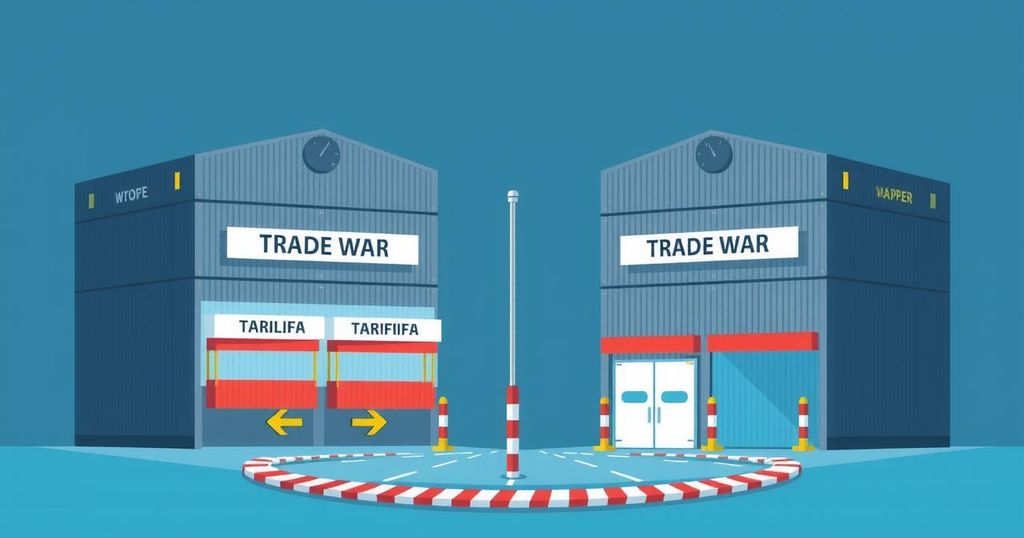Understanding China’s ‘Two New’ Policy: Strategies for Emission Reduction and Economic Growth
China’s central government has prioritized the “two new” policy to enhance domestic demand and reduce emissions by upgrading equipment and enabling trade-ins of consumer goods. This initiative, characterized by government subsidies and expanded product eligibility, aims to stimulate green economic growth while addressing carbon reduction targets.
China’s central government has prioritized “boosting consumption… and stimulating domestic demand” as its main objective for 2025, as highlighted during the recent “two sessions.” Amid economic challenges, the State Council emphasized its “two new” (两新) policy, initially announced in 2023, which focuses on integrating green practices and improving domestic consumption, notably through significant investments in recycling and trade-in programs.
The “two new” policy, elucidated in the Communist Party’s Qiushi magazine, stands for “large-scale equipment upgrades and trade-in of consumer goods.” It aims to enhance domestic consumption while improving equipment efficiency to reduce emissions. President Xi Jinping reiterated its significance early in 2024, transitioning the policy from vision to actionable plan with specific execution methods.
Prof. Bai Quan from the Academy of Macroeconomic Research outlined four components of the “two new” approach: upgrades to large-scale manufacturing equipment, consumer goods trade-ins, recycling of outdated items, and improving product standards for efficiency and emissions, which collectively aim to support carbon reduction.
Under this initiative, government subsidies are extended to both consumers and manufacturers for upgrading to energy-efficient goods and recycling. In 2025, the budget was increased to enhance the trade-in scheme, expanding eligible products including more petrol cars while introducing comprehensive trade-in standards for 294 items by year-end.
The upgrade mechanism under “two new” involves financial support to facilitate the trade-in and upgrading of goods. A consumer may exchange an old petrol vehicle for an electric model with government subsidies. Premier Li Qiang announced the issuance of substantial treasury bonds to bolster these trade-in programs, emphasizing the financing mechanism’s role in development strategies.
As the leading producer of renewable energy, China anticipates significant recycling needs for decommissioned solar and wind equipment by 2030. Addressing the limited recycler market is crucial for the policy’s success, despite existing incentives introduced in 2023 and 2024. A state-owned recycling entity was established in 2024 to improve capacity for handling renewable resources, although challenges persist for private recyclers due to financial policy hurdles.
The trade-in component of the “two new” policy seeks to bolster sales of essential consumer goods through subsidies, expanding eligible products from eight to twelve categories in 2025. The continued inclusion of electric vehicles further underlines the government’s commitment to reducing carbon footprints in transport.
Early data indicates that these trade-in schemes significantly contributed to increased sales of new energy vehicles, clinching over 60% of total purchases. Major gains in energy-efficient products were also recorded. Analysts suggest that while the initiatives promise financial relief for consumers, they predominantly favor energy-intensive purchases rather than a broader economic stimulus.
Insights from experts suggest the impact of the “two new” policy and its forthcoming specifics will help quantify its effectiveness. As a sign of broader national strategies, the policy aligns with China’s ambitions for a green economic transition by 2035, with initial estimates showing reductions in coal use and carbon emissions in 2024.
This content originally appeared in Carbon Brief, emphasizing the potential of the “two new” policy in China’s economic and environmental landscape.
The “two new” policy reflects China’s strategic approach to stimulate domestic demand while simultaneously addressing carbon emissions through equipment upgrades and trade-ins. The government’s increased funding for trade-in programs, along with incentives for recycling, serves to amplify the transition toward a more sustainable economic framework. As a key component of the overarching transition strategy, the effectiveness of this policy in driving both economic growth and environmental sustainability remains to be fully assessed.
Original Source: reccessary.com








Post Comment